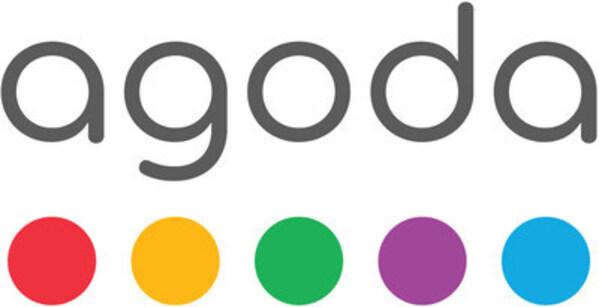BEIJING, Nov. 15, 2023 /PRNewswire/ -- The China Academy of Art has welcomed the celebration of its 95th anniversary since its establishment in the recently inaugurated Liangzhu campus in East China's Zhejiang Province. As the nation's first comprehensive national institution for higher artistic education, the art academy mirrors the evolution of contemporary Chinese art and artistic education over the last century.
Gao Shiming, president of the academy, told the Global Times that Chinese President Xi Jinping's emphasis on the need to combine fine traditional culture with the Marxist stand, viewpoint and approach, also known as the "second integration," holds significant implications for art education. In addition, humanity is entering the "second Renaissance," to which China is making global contributions.
At a meeting on cultural inheritance and development in June, Xi called for the integration of the basic tenets of Marxism with traditional Chinese culture, known as the "second integration," which builds on the Communist Party of China's "first integration" of theoretical synthesis - the integration of the basic tenets of Marxism with China's specific reality, the Xinhua News Agency reported.
Ma Yifu, a renowned Chinese scholar, once asserted that Marxism has reactivated a socialist gene that exists in Chinese traditional cultural thought and social history, Gao said.
Common core values
Traditional Chinese culture and Marxism share common core values, such as the concept of equality. Chinese philosopher Wang Yangming's proposal of "cultivating moral consciousness, envisioning every individual as a saint," aligns with Marx's perspective on equality.
Similarly, the integration of Marxism and China's fine traditional culture has been vividly manifested in Chinese art, placing the people at the center and elevating them as the social subjects.
For instance, in the 1950s and 1950s, the Zhejiang school of figure painting, led by Fang Zengxian, employed techniques traditionally used for emperors, bodhisattvas and flora to portray ordinary farmers. This marked a significant period in China's millennia-old art history.
From its inception, the China Academy of Art envisioned an academic mission of "introducing Western art, organizing Chinese art, reconciling Eastern and Western art, and creating contemporary art." Over the last 95 years, the institution has walked alongside the history of modern Chinese art, responding to national crises and reinventing itself in the face of contemporary challenges.
During this period, two scholarly ideas have consistently unfolded: One represented by the inaugural dean, Lin Fengmian, which embodies the "integration of Chinese and Western styles." The other school of thought, pioneered by figures like Huang Binhong and Zhao Wuji, follows the path of "innovation within tradition." Zhao created a form of modern painting from within the folds of Chinese tradition. He activated certain elements of Chinese tradition by using modern art, creating an alternative, distinct and unique form of modern painting that gained global recognition.
"The last 95 years have seen the China Academy of Art charting a path in modern art education deeply rooted in the Chinese soil, reflecting a journey of artistic revival that is both grounded in tradition and independently innovative," Gao said.
What does a Renaissance require? "Prosperous technology, flourishing arts, developed commerce and a gathering of talents - we have all these elements now," Gao said.
'Second Renaissance'
He explained that the first Renaissance was catalyzed by an external factor - the Age of Discovery. Today, the internet serves as the great navigation of the 21st century. People in the world are not just witnessing a Renaissance in China but a global Renaissance in which China has started contributing to the world.
In the 21st century, art education in China has taken on a more significant role, serving as a catalyst for societal innovation. The current Chinese society craves innovation, creativity and self-transcendence. Igniting the primitive innovative capabilities of the entire nation is crucial.
"I often tell students not to confine themselves to being artists within the art realm but to become artists of the world," Gao said, adding that contemporary society demands the need for not just traditional artists but countless art professionals with the ability to innovate and imagine, solving real-world problems. This is the fundamental goal of the China Academy of Art - to foster a culture in which the entire art community contributes to the construction of a beautiful China and the high-quality development of the nation.
In the era of the first Renaissance, the world was not peaceful. Today, the world faces constant conflicts, making culture and art even more crucial as forces of reflection and reconciliation, guiding people into a more essential and expansive realm, allowing humanity a sense of transcendence.
The great French writer Flaubert once said, "Art and science met at the foot of the mountain and parted ways at the summit." The difficulty lies in people's journey not yet "reaching the summit," as people have technologized science and turned tools into technology.
Gao believes there's no need to rush; scientists and artists can engage in more philosophical exchanges. Simultaneously, people can start with specific initiatives, such as promoting a course called "illusion."
Scientists delve into the internal and physiological mechanisms of illusions, while artists design various illusions. This is a tangible course illustrating the fusion of science and art.
From another perspective, in the era of general artificial intelligence, people might leverage AI to become individuals with more extensive space and creative capabilities, akin to Da Vinci's versatility.
"As artificial intelligence advances, human artistic intelligence also grows," he said.











